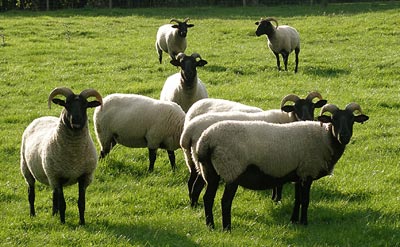
A favourite variety of tangerine which is sweet, easy to peel and seedless. They have an irregular shape but great flavour.
A dry, salted ham smoked over peat. It is dry-cured and rubbed with salt.

A name for Duchess of Oldenburg, a variety of dual-purpose apple which arose in Russia in the Tula region in the early 1700s. It migrated through Germany and Sweden to England, where it was renamed, in the early 1800s and thence to the United States in the 1830s. It is a yellow apple strongly striped with red. It is an early-season variety, harvested from mid-August in South-East England and with poor storage properties.
A fresh vegetarian sheep's milk cheese from North Yorkshire. Received a Silver Medal at the 1996 British Cheese Award. It is also available with chives, garlic, green peppercorns, mint or parsley.
An indeterminate heirloom variety of beefsteak tomato producing large, lobed, sunny yellow fruit shot with rose red. Fruits have smooth texture and mild flavour. It is a good slicing tomato.

The Norfolk Horn is found in Norfolk, Suffolk and Cambridgeshire and is one of the ancient "Heath" breeds. The Norfolk Horn was used along with Southdown in the development of the much more prolific Suffolk breed. It is a medium sized animal with a long body and legs. The face and legs are black or dark brown and free of wool. The fleece is white with new born lambs being mottled. Both sexes are horned and the horn pattern is an open spiral. The breed was nearly extinct in 1973. The result was initially referred to as New Norfolk Horn but in 1984 the name reverted to Norfolk Horn. The breed is still endangered.

The Norfolk Horn is found in Norfolk, Suffolk and Cambridgeshire and is one of the ancient "Heath" breeds. The Norfolk Horn was used along with Southdown in the development of the much more prolific Suffolk breed. It is a medium sized animal with a long body and legs. The face and legs are black or dark brown and free of wool. The fleece is white with new born lambs being mottled. Both sexes are horned and the horn pattern is an open spiral. The breed was nearly extinct in 1973. The result was initially referred to as New Norfolk Horn but in 1984 the name reverted to Norfolk Horn. The breed is still endangered.